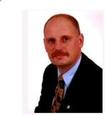Why didn’t the Skeleton go to the party? Because he didn’t have any body to go with.
Okay joke over and now down to business.
Skeleton didn’t realise that he was the most important aspect of the physiology of coaching.
The body is a wonderful thing and is made up of a range of components; skin, muscle, fat, blood, organs, etc. but what’s the foundation of Skeleton’s success in life? He has structure. That structure supports muscle, which reciprocates by helping the bones stay together. Bones enable fat to accumulate around various parts of the body; excess that can be trimmed (with some work!). Skeleton forgot that he used to have skin – something that holds everything inside itself – but without bones the whole body would be in a messy blob on the floor.
What’s the point? Without structure things could get messy. It’s the same with coaching – no structure – equals - big mess. What skeletal structure should coaches use? There are a number of models available but the one I want to share is TGROW (commonly attributed to Sir John Whitmore).
At the head of the body is the skull that contains the brain. The organ that sets the scene for the next event, the part that checks initial understanding of situations just as TOPIC does for a coaching session.
Each Skeleton has a spine – the backbone of any structure – it holds things together but is flexible enough to allow for new experiences. TGROW’s spine is GOAL. The Skeleton provides the objective basis for movement. Attempting something physically new & demanding is great but without first checking the bodies physical state & establishing an objective plan to reach their new perspective/aim/objective then damage to the body is likely. The spine operates a SMART system of holding itself together. It has a specific structure; it is measurable (it has discs that can be counted, a blood supply and a nerve network); its action based – it needs to be, you have to move sometimes!); its realistic – its there, you’d soon know if it wasn’t – and it lets you know when its reaching its limitations; its time phased – its there all the time and hardly ever gets phased. The same is true with coaching.
Checking and exploring a situation to see how it impacts on the progress & success of goals is as important with a body as it is with coaching. The comprehensive range of movements that our bodies are capable of can be improved upon through a range of exercises. Once muscles have been prepared for the new activity then away we go. REALITY in TGROW allows for that exploration of areas around the goal that can impact on & influence the outcome. Objectivity is a key factor in this area as goal consideration should be free from self-limiting or other judgemental beliefs.
If the body needs to move from A to B what does it do? It figures out the best way there and the most effective method to use. Usually the body will walk but there are alternatives; crawl, go on all fours, jump, etc. Within TGROW these alternatives can be covered in OPTIONS. Set the GOAL, check REALITY then figure out the OPTIONS. It may be that the most effective way forward is that based on common sense (walk to the destination) but other OPTIONS could be as effective, and perhaps more fun! The coaching relationship provides a safe environment where options can be considered.
After setting the GOAL, checking REALITY and assessing the OPTIONS, Skeleton, safe in its protective skin, decides on the WAY FORWARD and commits to taking the steps needed to move from A to B. It’s the same in coaching.
Finally, Skeleton, safe in the knowledge that it’s considered all that there is to think about, starts moving forward – BUT it comes across a corner and has to review it’s strategy, think about new OPTIONS, check out the new REALITY and compute a new WAY FORWARD. The good thing about TGROW is that you can revisit any part of the model at any time of the journey in the knowledge that, just like Skeleton, the structure is there to support you.
Be well.
Pete Mackechnie.
Peter has a wide breadth and depth of experience in executive coaching and management and leadership skills development. Coaching has been the primary Leadership and Management style Peter has used throughout his career to date. He’s passionate about the outcomes that his clients experience when working with him and believes that the coaching relationship is based on an effective facilitated partnership.

Post new comment
Please Register or Login to post new comment.